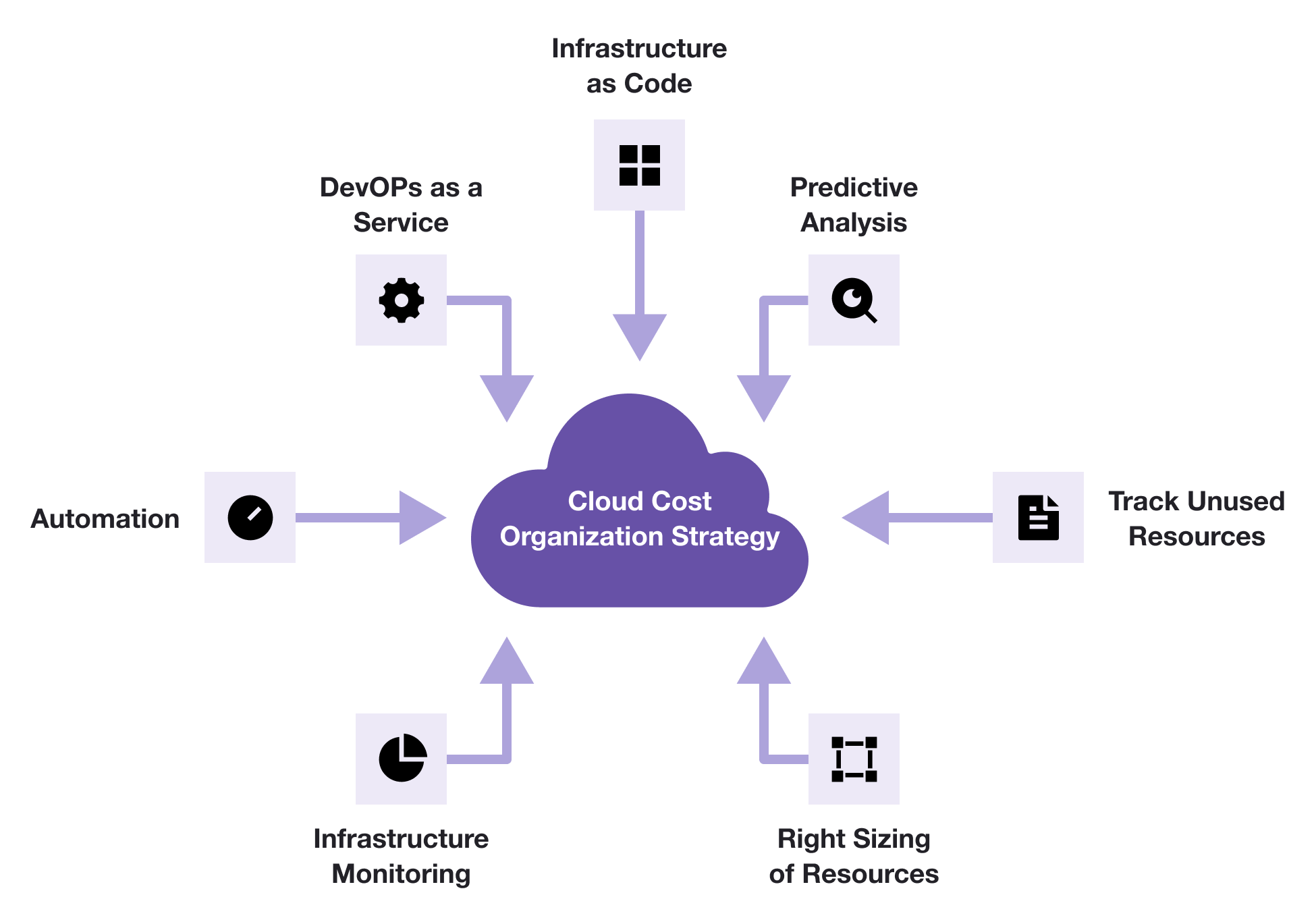This blog title covers the two most current trendy and most in-demand technologies, AI and cloud. Over the last 2 years, we have seen how AI keeps evolving and getting more advanced with time. Last week Google launched its more advanced AI model Gemini which outperforms human experts on MMLU (Massive Multitask Language Understanding). It is a significant leap in how AI can improve our daily tasks and it is pretty much confirmed that we cannot imagine our future without AI. On the other hand, AI requires abundant computing power and access to a huge number of datasets and resources which makes it difficult for smaller companies to afford. So here cloud computing comes into action to help AI to make it affordable to everyone. AI and Cloud power each other. Now it is time to understand how we can use cloud infrastructure management and benefit our businesses.
First, let's try to understand what are the inefficiencies in the cloud :
In-Efficiencies in the Cloud:
Cloud Adoption is growing and from Gartner research, it is expected that more than 60% of enterprises will be moving to the cloud by 2027. Keeping this in mind there are a few challenges and concerns with the cloud are
1) Governance
2) Security
3) Cloud Cost Management
It is a fact that every year almost 30% of the cloud spending goes to waste because of no proper management. Cloud Adoption is easy but when the companies adopt it to other teams, and departments cloud inefficiencies start piling up. Now let's see how AI can help us to solve these challenges in cloud Infrastructure management.
AI in the Cloud:
We all know that a lot of manual things lead to human error. Automation is one of how AI benefits of the cloud. AI makes it error-proof by provisioning, managing, scaling, and monitoring workloads.
Let's discuss how AI benefits the cloud:

- Monitoring the performance:
By implementing an AI-powered continuous monitoring platform it is easy to monitor the cloud around the clock without losing accuracy and in the end improving cloud efficiency.
- AutoScaling for dynamic workloads:
Organizations can flexibly adjust resources in response to current demand thanks to AI-driven auto-scaling. Algorithms for machine learning examine consumption trends and forecast future needs, allowing resources to be provisioned and decommissioned automatically. This minimizes expenses during slow periods and guarantees high performance during busy times.
- Cost reduction:
One of the most important factors where AI can play its role for organizations by cutting down cloud costs. For instance, you can use AI Ops to automate development instances' power cycles so they are turned off on the weekends. Another method is to automate the Amazon EC2 Reserved Instance purchase process by utilizing cloud-specific AI tools like AWS Lambda. According to Gartner, due to unawareness of the mistakes made in their cloud adoption organizations overspend money by 20 - 50% .
To avoid these mistakes in the cloud I want to make you aware of the tool OnePane which gives complete cloud resource visibility where you can easily track and analyze how resources are used; can also calculate your service-related costs up to the resource level ensuring that each project’s requirements are met while minimizing waste.
- Infrastructure Optimization tools:
Infrastructure optimization solutions driven by AI assess the existing condition of the infrastructure and offer doable suggestions for enhancements. With the use of machine learning models, these tools may adjust recommendations in response to shifting usage patterns, creating a cloud environment that is always optimized.
- Advanced Security:
Security is a major concern for all organizations. One of the shocking facts is that more than 80% of cloud breaches are due to human error not from cloud providers. Vital security challenges are unauthorized access, insecure APIs,s and external data sharing. AI can help in 24/7 monitoring by identifying loopholes and security breaches on time.
- Automating Infrastructure as Code (Iac):
To maintain the integrity of the environment, IT infrastructure is defined in configuration files and activated automatically during deployments following that configuration. The operational environment must be built, tested, managed, and version-controlled similarly to the source code. Through the automation of Infrastructure as a Service (IaC), common configuration items (such as virtual machines or VPNs) can be defined, application components and services loaded into these configuration items, and then assembled to provide the ideal operating environment.
- NLP Intuitive Operations:
Use natural language queries and instructions for infrastructure management by integrating NLP. Organizations enable operators to connect with and control the infrastructure more naturally by using voice-activated interfaces or chatbots.
- Intelligent Incident Response:
Integrating with AI speeds up problem identification and resolution in incident response systems. By reducing downtime and interruptions, automated solutions based on pre-established criteria and machine learning models improve incident resolution's speed and accuracy.
OnePane This tool can help you in faster incident management by unifying alerts from all tools in a single interface saving you valuable time and ensuring you are always up-to-date with critical notifications.
Conclusion:
Cloud may become more resilient, high-performing, and cost-effective by utilizing AI in cloud management. Over time, the capabilities of cloud and AI have grown and changed together. AI can assist in strategic corporate decision-making and cloud maintenance, and its vast intellect can be powered by the flexibility, agility, and scalability of the cloud. AI solutions assist you in making careful use of the cloud, even with its obstacles (such as data privacy, connectivity, and integration). To develop a self-sustaining cloud with AI and democratize AI services, the future lies in the co-creation and innovation of AI and cloud computing.

